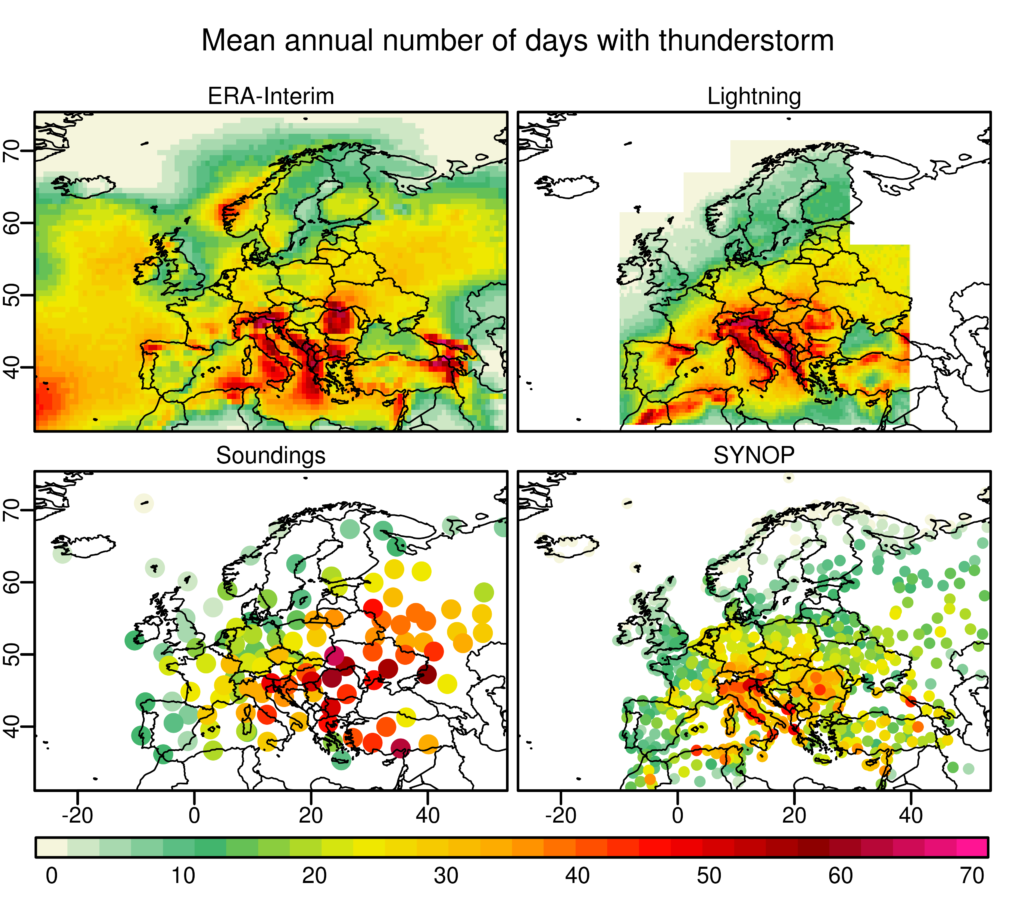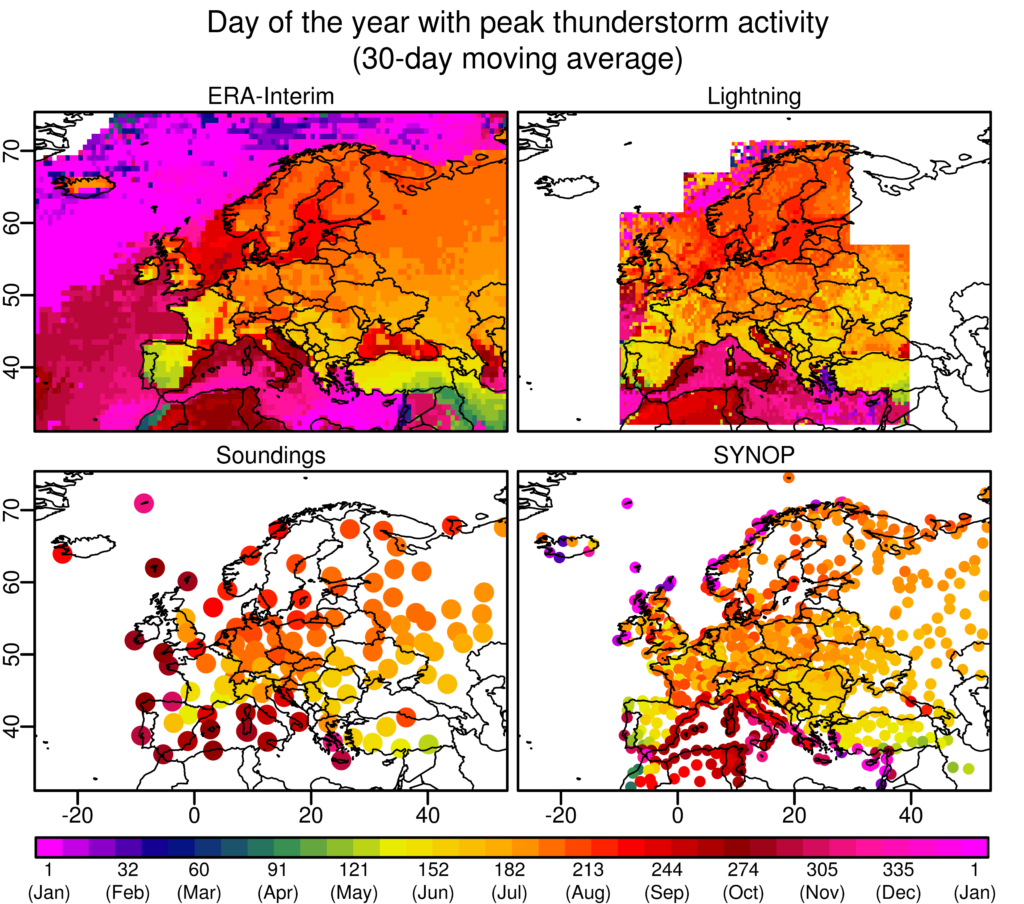A new study on the climatology of thunderstorms, “A climatology of thunderstorms across Europe from a synthesis of multiple data sources”, has been published in Journal of Climate. The study was led by Mateusz Taszarek from Adam Mickiewicz University in Poznań and co-authored by Tomáš Púčik and Pieter Groenemeijer from ESSL, among others.
Different datasets were used to investigate the climatology of (severe) thunderstorms across Europe, namely the ZEUS and EUCLID lightning detection networks, SYNOP observations, soundings, ESWD reports and the ERA-Interim data. Weaknesses and strengths of each of the datasets were discussed, as well as similarities and differences in the context of annual number of (severe) thunderstorms days and their annual cycles across various parts of Europe.
For example, the mean annual number of thunderstorm days based on lightning observations over Romania was lower compared to the ERA-Interim dataset, but higher over Hungary, southwestern Slovakia, the Czech Republic and southern Germany. Compared to SYNOP observations, lightning detection networks show higher number of thunderstorm days over most of Europe.

Figure © Copyright 2019 AMS.
While there were numerous differences between results obtained the individual datasets, the annual cycle was reproduced similarly by all of them. Datasets show that the thunderstorm season peak shifts from south to north from May to August over the continental parts of Europe and then shifts to the Mediterranean area in the autumn. Inland areas of Spain experience the peak in thunderstorm activity in May to June and the eastern coastal areas experience the peak in September to October.

Figure © Copyright 2019 AMS.
You can read more here:
Taszarek, M., J. Allen, T. Púčik, P. Groenemeijer, B. Czernecki, L. Kolendowicz, K. Lagouvardos, V. Kotroni, and W. Schulz, 2019: A Climatology of Thunderstorms across Europe from a Synthesis of Multiple Data Sources. J. Climate,32, 1813–1837, https://doi.org/10.1175/JCLI-D-18-0372.1.
